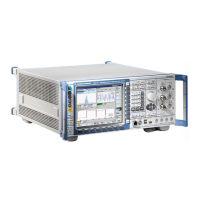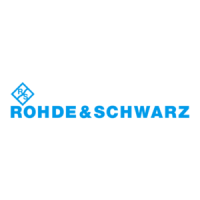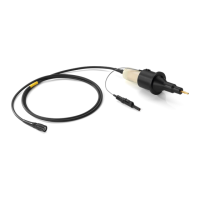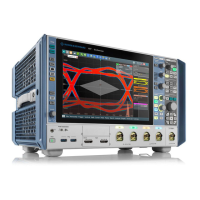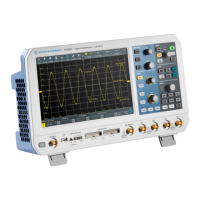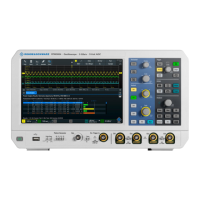CMU RF: Connection Control
1100.4903.12 4.65 E-10
second (hopping) frequency can be entered in the Hopping Frequency input field.
Two definitions of the hopping frequency are provided:
Absolute The absolute value of the hopping frequency is entered.
Relative The difference between the hopping frequency and the basic
frequency is entered. The resulting absolute frequency, i.e. f
abs
=
f
rel
+ f
base
must lie in the allowed range for the CMU (see data
sheet).
If frequency hopping is selected the RF signal frequency changes after every
4.615 ms: the dwell time at a frequency is as for GSM signals.
Remote control
SOURce:RFGenerator:FHOPping:STATe <ON | OFF>
SOURce:RFGenerator:FHOPping:FREQuency <Frequency>
SOURce:RFGenerator:FHOPping:FREQuency:MODE
<ABSolute | RELative>
Ramping
The Ramping parameter defines whether the Tx is a continuous, unmodulated sig-
nal (CW signal, Ramping is Off) or a series of pulses (Ramping is On).
If ramping is On the CMU generates rectangular, GSM-like pulses with a duration
of 577 µs.
Remote control
SOURce:RFGenerator:PULSe:STATe <ON | OFF>
RF Connectors (Connection Control – RF)
The tab RF configures the connectors for the two RF signals Tx and Aux Tx (with option CMU-B95,
Additional RF Generator; see section Generator Settings (Connection Control – Generator) on p. 4.61
ff.). This includes:
Selection of the RF signal (TX / Aux Tx)
The RF input and output of the CMU (RF Output, RF Input)
An external attenuation at the connectors (Ext. Att. Output, Ext. Att. Input)
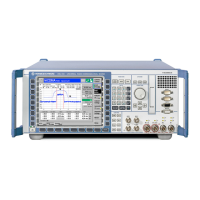
